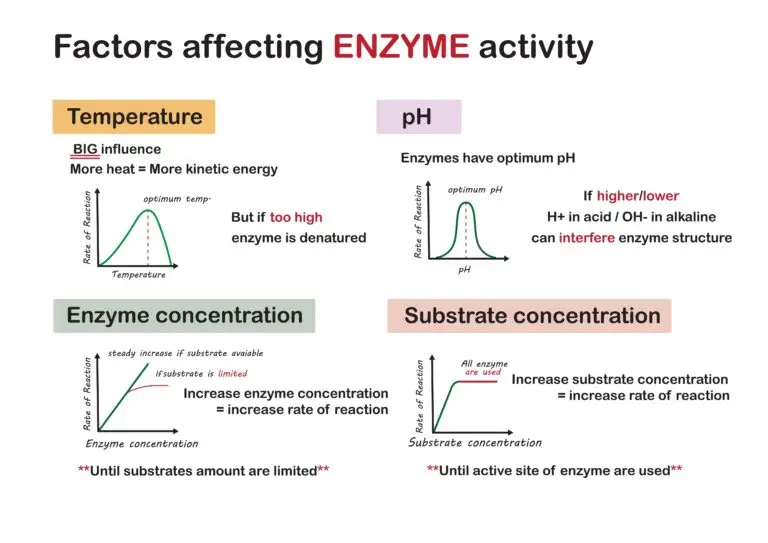Enzyme

Table of Contents
What is an Enzyme
An enzyme is a biological molecule, typically a protein, that catalyzes and accelerates chemical reactions within living organisms.
Enzymes play a fundamental role in various physiological processes by increasing the rate of reactions without being consumed or altered in the process. They are essential for the functioning of cells and are involved in a wide range of metabolic pathways.
Key Characteristics of Enzymes
Catalysis
Enzymes act as catalysts, speeding up chemical reactions by lowering the activation energy required for the reaction to occur. They facilitate the conversion of substrates (reactant molecules) into products.
Specificity
Enzymes exhibit specificity for their substrates. Each enzyme is designed to catalyze a particular type of reaction, and its structure complements the structure of its specific substrate.
Lock-and-Key Model
The lock-and-key model describes the specificity of enzyme-substrate interactions. The active site of the enzyme (the “lock”) fits precisely with the substrate (the “key”), ensuring a proper fit for catalysis.
Induced Fit Model
The induced fit model suggests that the enzyme undergoes conformational changes upon binding to the substrate. The binding induces changes in the enzyme’s active site, enhancing its catalytic activity.
Reaction Specificity
Enzymes are highly specific to the types of reactions they catalyze. For example, there are enzymes that catalyze reactions involving the breakdown of molecules (hydrolases), the synthesis of molecules (synthases), and many other types of reactions.
Examples of Enzymes
- Amylase: Catalyzes the hydrolysis of starch into sugars.
- Catalase: Catalyzes the breakdown of hydrogen peroxide into water and oxygen.
- DNA Polymerase: Involved in DNA synthesis during replication.
- Lipase: Catalyzes the hydrolysis of lipids into fatty acids and glycerol.
- RNA Polymerase: Facilitates the synthesis of RNA from DNA templates.
Related Links
Biotechnology
Decomposer
Digestion
Lysosome